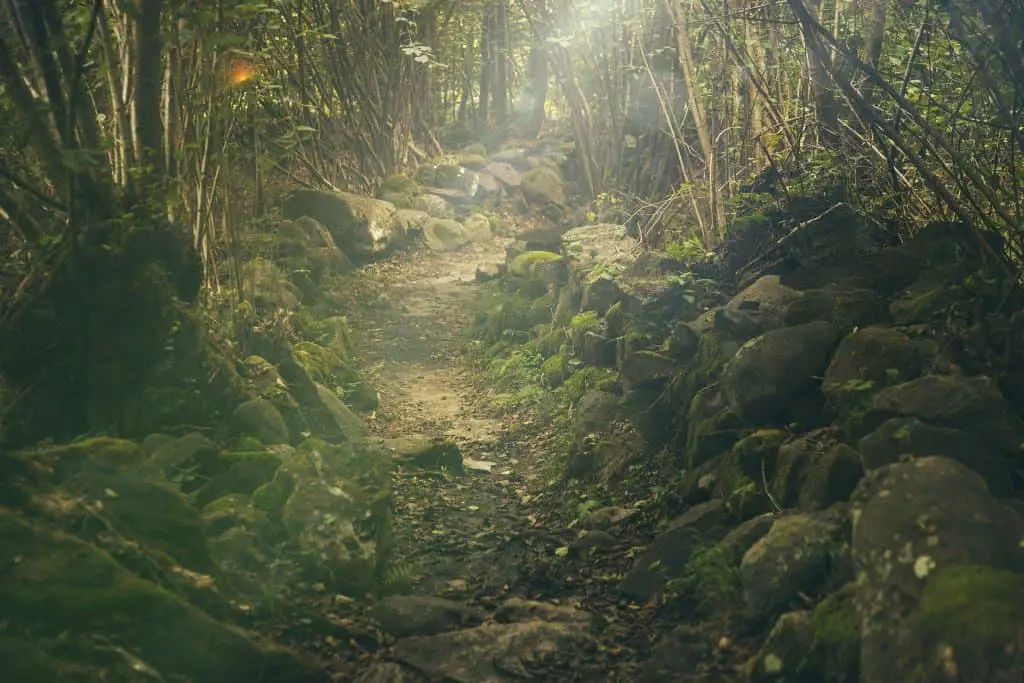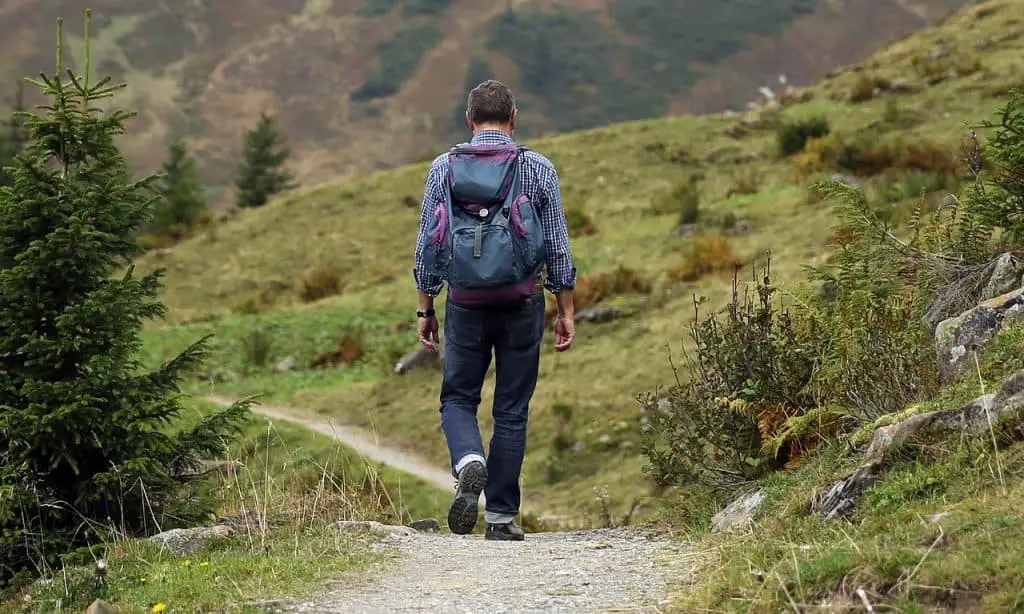If you’re out in the wilderness and come into contact with poison ivy there are three steps that you should follow.
How To Treat Poison Ivy In The Wilderness
- Wash your clothes and the area affected with cold water
- Compress the irritated skin with a cold cloth
- Apply an anti-itch lotion
You most likely aren’t carrying any soap with you while out on a trail, so use any cold water you’re carrying to scrub the affected area. To reduce the spread of poison ivy you should also soak and clean the clothes you were wearing. The poison ivy oils have the ability to stay on most materials for months after.
Your skin will be itchy and irritated after being touched by poison ivy. A cool cloth compressed will help to soothe and reduce the itching.
Keeping an anti-itch lotion in your bag while out in the wilderness will help to reduce swelling and rashes on your skin immediately after running into poison ivy. This item will help protect you from scratching and itching until you can get home and take better care of the area.
Touched Poison Ivy? When should you go to the hospital?
Poison ivy can usually be handled with in-home treatments. There are certain conditions to look out for that should alert you to seek medical attention. Here’s what you should watch out for if you’ve touched poison ivy.
- Shortness of breath
- Trouble swallowing
- Severe blistering
- Severe swelling
- A fever
- The rash is covering a large area
- The rash is on your face
The first thing a doctor can help with is verifying that these symptoms are from poison ivy and not from other skin conditions. Besides being diagnosed, a doctor can provide treatment is the poison ivy rashes are widespread and causing other issues. It is possible to develop an infection from the rash, in which a doctor can prescribe antibiotics to fight it.
How long does poison ivy last?
Poison ivy can take up to two days to cause a reaction and can last for two to three weeks. The amount of oil that gets on your skin is what determines the length and the severity of the rash.
To reduce how long poison ivy lasts you should keep the area clean and apply creams to reduce inflammation and heat. You should also keep a close look at the affected area in order to be alerted of any large changes. It is possible for the area to become infected, which could require other medication and care.
What is the best natural remedy for poison ivy?
There is no one best natural remedy for poison ivy but there are a few options that you can try.
Menthol Cream
Peppermint has compounds that have the ability to create a cooling effect on sore and irritated skin. There are many creams that have peppermint as an ingredient and can be applied lightly to irritated skin in order to soothe the area and reduce itching while the rash remains.
Aloe Vera
Aloe Vera is a common household item often used to help soothe sunburnt skin. Because of that, it can be applied to itchy skin from poison ivy as well. If the rash is swollen then aloe vera can also reduce any inflammation.
Witch Hazel
Witch Hazel is made from the plant, Hamamelis virginiana. This liquid product can help you to ease itching, reduce swelling, and the burning feeling on your irritated skin.
Apple Cider Vinegar
The vinegar solution will help to dry up the oils in your skin and can speed up the healing process. Applying this to your skin will dry out the area but you can combine this remedy with other cream or lotion in combination.
Summary
There are three main steps to treating poison ivy in the wilderness.
You first want to completely clean the affected area and the clothes you were wearing with soap and cold water. After cleaning the area you should use a cold cloth to compress the irritated skin, helping to reduce inflammation and reduce the itching. By now the area should be less swollen, and you can apply anti-itch cream to keep the rash in control and reduce itching while the skin heals.
Resources:
https://www.mayoclinic.org/diseases-conditions/poison-ivy/symptoms-causes/syc-20376485
https://www.healthline.com/health/outdoor-health/poison-ivy-pictures-remedies
https://www.dmu.edu/news/2019/08/everything-you-need-to-know-about-poison-ivy/




